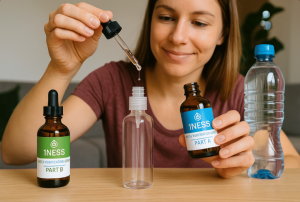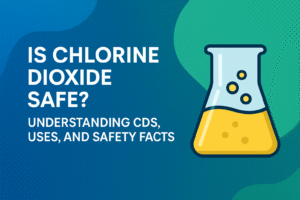The Turning Point of 1986: Rethinking Vaccine Safety and Corporate Accountability
In 1986, a legislative decision reshaped public health, pharmaceutical power, and consumer rights in ways still echoing today. The passing of the National Childhood Vaccine Injury Act (NCVIA)—commonly known as the 1986 Vaccine Safety Act—was seen by many as a necessary step to preserve vaccine supply. Yet, this act quietly initiated a sweeping change in corporate accountability, setting a precedent that would later inspire similar legal protections across other industries.
The act granted vaccine manufacturers legal immunity from lawsuits related to vaccine injuries—redirecting claims to a government-run program. Though designed to protect public health infrastructure, the unintended consequences have raised ongoing concerns about transparency, safety, and trust in health institutions.
What the 1986 Vaccine Safety Act Actually Did
During the 1980s, vaccine manufacturers faced mounting lawsuits over claims of injury caused by their products. Many companies threatened to pull out of the market entirely, citing unsustainable legal risks. In response, the U.S. government passed the NCVIA to preserve vaccine access while addressing safety concerns.
The act’s primary provisions included:
- Legal immunity for manufacturers: Vaccine makers could no longer be directly sued for injuries caused by their vaccines.
- The National Vaccine Injury Compensation Program (VICP): A no-fault compensation system funded by a surcharge on vaccines to resolve injury claims.
- Safety monitoring mandates: The law called for improved reporting of adverse reactions and better vaccine safety oversight.
At first glance, the law appeared balanced—relieving pharmaceutical companies of crushing legal exposure while offering a pathway for injured individuals to seek compensation. But as time passed, the broader impact of this immunity began to show itself.

Corporate Immunity and Its Consequences
By shielding manufacturers from direct lawsuits, the 1986 act changed the incentive structure within the pharmaceutical industry. With reduced legal risk, financial accountability for product harm decreased, potentially weakening the pressure to prioritize safety improvements.
While the VICP has compensated over $4 billion to affected individuals since its inception, critics argue that:
- The program lacks transparency and consistency.
- The burden of proof often rests heavily on the injured party.
- Legal immunity can dull the industry’s motivation to innovate safer products.
This legal precedent has also influenced other sectors. For instance, there have been calls for similar liability shields in the pesticide industry, raising alarms about how far corporate protections may go.
The Rise of Risk-Taking Culture
When a corporation knows it won’t be held financially liable in court, it may be more willing to accept greater risks. This isn’t about vilifying all pharmaceutical companies—it’s about acknowledging how incentives shape behavior.
The 1986 act didn’t just safeguard vaccine production; it arguably accelerated a broader culture of corporate risk-taking with fewer consequences. The act effectively said: “We’ll take care of the fallout so you can keep producing.”
This raises the critical question: Can safety truly remain a priority when accountability is removed?
In the years since, the pharmaceutical industry has expanded rapidly, with billions of dollars invested in research and marketing. But trust in the system has also eroded—especially as more people become aware of how legal immunity can shield large corporations from responsibility.

From Vaccines to Pesticides: Expanding the Precedent
The legal protections established by the 1986 act have inspired similar proposals in industries far removed from public health. A notable example is the pesticide sector, where some lobbying efforts have pushed for comparable shields from litigation.
The rationale is similar: Protect the supply chain. Encourage innovation. Avoid burdensome lawsuits.
But critics argue that when entire industries are insulated from accountability, the balance of power tips too far. Consumers are left vulnerable, regulatory oversight becomes reactive instead of proactive, and public trust suffers.
If legal immunity becomes a standard solution, the burden of responsibility shifts entirely to consumers and watchdog groups—creating a system where harm must occur before change is considered.
Erosion of Public Trust
While the 1986 Vaccine Safety Act may have stabilized vaccine production in the short term, it also planted seeds of long-term public skepticism.
The act assumed that the public would trust manufacturers and government institutions to uphold safety voluntarily—without the pressure of legal consequences. But trust isn’t built on hope. It’s built on transparency, accountability, and consistent integrity.
Public confidence in health institutions has since wavered, particularly during moments of high-stakes decision-making. From vaccine mandates to pandemic responses, many individuals now view corporate and government motives with growing suspicion. And while some of this mistrust is fueled by misinformation, the lack of meaningful recourse for affected individuals has done little to reassure the public.

Learning from 1986: Building a Healthier Future
The lessons from the 1986 Vaccine Safety Act go beyond the pharmaceutical industry. They remind us that innovation must be matched with responsibility, and that public health cannot thrive without public trust.
If we want to move forward in a way that respects both progress and people, we must demand:
- Transparent oversight systems: Corporations should be required to report adverse outcomes clearly and publicly.
- Fair and accessible compensation pathways: Injury victims should not face uphill legal battles or inconsistent rulings.
- Stronger ethical safeguards: Legal immunity must come with reinforced safety obligations, third-party audits, and transparent data sharing.
- Consumer empowerment: The public deserves access to independent information and resources that enable informed decision-making.
And above all, we need to rebuild community trust in health through inclusion, dialogue, and accountability.
Why This Still Matters Today
As more industries seek legal protection from liability—from pesticides to tech and beyond—the 1986 act serves as a critical reference point. It asks us to reflect: What happens when profit-driven systems are allowed to operate with limited consequence?
If immunity becomes the norm, how do we protect people—not just from harm, but from being silenced in the aftermath?
The path forward must include policies that support both innovation and justice—a system where corporate progress does not come at the cost of public safety.
Final Thoughts: Reclaiming Our Voice in Health Policy
The story of the 1986 Vaccine Safety Act is not just about vaccines. It’s about the relationship between people, corporations, and power. It’s about how legislation can shape behavior, affect lives, and erode trust when accountability is removed.
To restore balance, we must stay informed, ask hard questions, and push for policies that value human health over corporate immunity.
It’s not enough to accept the status quo. The more we understand the implications of past legislation, the more equipped we are to shape a future that prioritizes safety, transparency, and ethical leadership.
Want to dive deeper into how natural health and informed community action can rebuild trust and resilience?
Join the conversation inside our Aging with Purpose Facebook Group, where we explore wellness solutions that prioritize people over profit.
Explore natural tools that support wellness without dependency on fragile systems.
Check out Soursop Cell Regenerator Drops and Mullein Lung Cleanse Drops for cellular and respiratory support.




